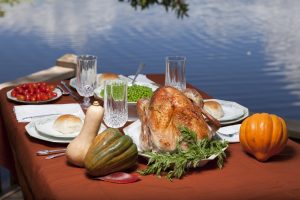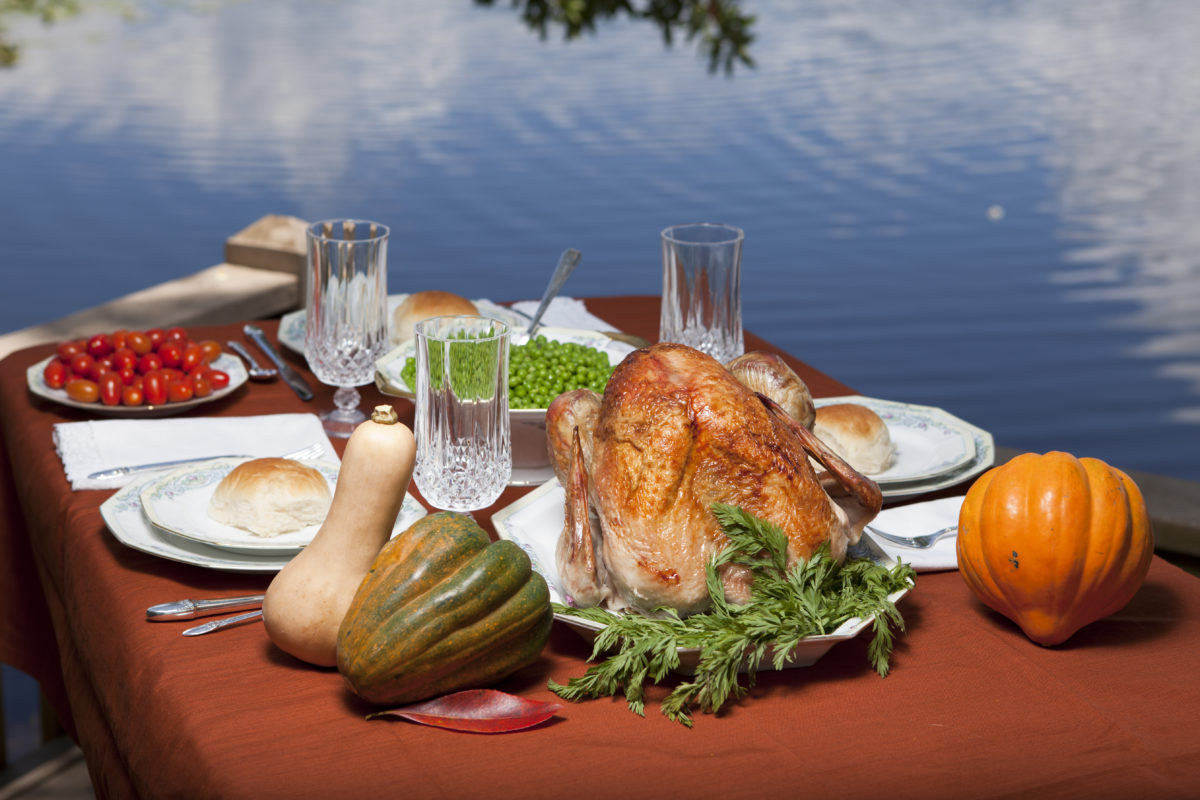
A fall food spread including a turkey and several varieties of squash on a lakeside table. (UF/IFAS Photo by Tyler Jones)
As we sit down to dine during the annual Thanksgiving feast, it’s worth noting that much of what we eat comes from Florida farmers, say University of Florida Institute of Food and Agricultural Sciences (UF/IFAS) researchers. Better still, scientists with UF/IFAS try to see if they can breed and grow certain crops in Florida to help growers and consumers.
When they breed new varieties of fruits and vegetables, scientists cross parent crops to get the best genes possible to create fruits and vegetables that taste better and are more resistant to diseases, heat, pests and other issues. Other scientists see if fruits and vegetables that wind up on your Thanksgiving plate can grow in Florida.
Whether they’re baked, mashed or sweet, potatoes pop up as one of the most oft-mentioned Thanksgiving foods that might come from Florida.
Sweet potatoes are often included in casseroles that vary among families, said Linda Bobroff, a UF/IFAS professor and Extension nutrition specialist.
“Many families have their own sweet potato casserole recipe that has been passed down through the generations. That recipe may be a well-guarded secret,” she said.
UF/IFAS researchers try to grow potatoes in Hastings, known for decades as the “Potato Capital of Florida,” and also the site of the UF/IFAS Hastings Agricultural Extension Center.
David Liu, an associate professor of horticultural sciences at UF/IFAS, has conducted trials to grow sweet potatoes in Hastings. In 2016, Liu tried to grow four sweet potato varieties, including Boniato, Burgundy, Covington, and Palmetto.
“We’ve tried to grow different types of sweet potatoes, and we have found the greatest success with Palmetto and Boniato, and we think this sweet potato offers good chances for farmers to grow more potatoes and for consumers to enjoy a good Florida-grown sweet potato at Thanksgiving,” Liu said.
Some farmers grow pumpkins, kabocha and kalabasa in Florida, and some consumers use them for a Thanksgiving pie ingredient.
Geoffrey Meru, an assistant professor of horticultural sciences at the UF/IFAS Tropical Research and Education Center in Homestead, Florida, wants to help farmers grow pumpkins that are more like winter squash. He’s trying to develop a variety that has superior flesh quality and nutritious seeds.
In addition to pumpkins and sweet potatoes used in desserts and casseroles, roasted vegetables may be included on some Thanksgiving tables, Bobroff said. You can vary the veggies used depending on what is in season in your area in November and your family’s preferences. Carrots, butternut squash, kabocha, kalabasa, Brussels sprouts, broccoli, cauliflower and asparagus all work well.
“Florida agriculture was severely impacted by Hurricane Michael this year,” Bobroff said. “We can help to support farmers and ranchers in Florida by purchasing Florida-grown produce and Florida-raised poultry and beef during the holiday season. What a good feeling to know that our Thanksgiving feast is not only delicious, but that it helps to support the agricultural industry in our state.”
Source: University of Florida Institute of Food and Agricultural Sciences
Share this Post










